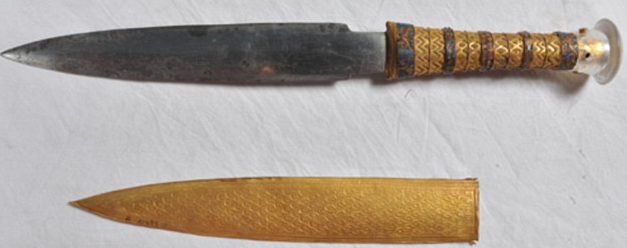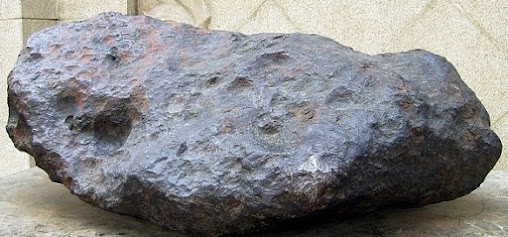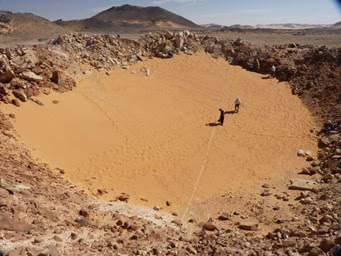 | Analysis of a dagger found in Tutankhamun's sarcophagus found the blade is made of iron from a meteorite. The dagger has a finely embossed gold handle with a crystal pommel. It was encased within a golden sheath. The blade contains high levels of nickel, along with traces of cobalt and phosphorus. Researchers were able to match the chemical composition to a meteorite which was found in 2000 on the Maras Matruh plateau in Egypt, 150 miles west of Alexandria. |
 | Ancient Egyptian royal archives from 1,400BC mention royal gifts of iron in the period immediately before Tutankhamun's reign. Tushratta, King of Mitanni – a kingdom in northern Syria and Anatolia – sent iron objects to Amenhotep III, the grandfather of Tutankhamun. |
 | The high quality of Tutankhamun's dagger suggests a mastery of iron working in his time. The 13 inch long (34.2cm) dagger was found lying beside the right thigh of King Tutankhamun's mummy. It was likely handed down from his father. Ancient Egyptians believed iron from meteorites had magical powers that could usher souls into the afterlife. To the ancient Egyptians, meteorites were gifts from the gods. They considered the sky divine, so anything that fell from it would have been seen as a gift from the gods – if not a physical piece of one. They believed that the gods had bones made of iron. (and flesh of gold, skin of silver and hair of lapis lazuli) |
 Kamil crater in southern Egypt | There is no evidence of iron smelting in the region until nearly 1000 years later, so there is no question where the metal came from. |  Tutankhamun’s daggers Tutankhamun’s daggers |

No comments:
Post a Comment